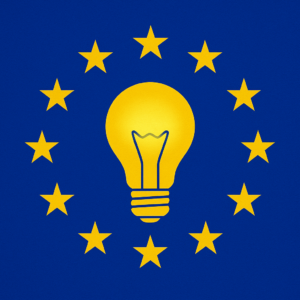Headquarters: Svetog Nauma 7, 11000
Office address: Đorđa Vajferta 13, 11000
Phone:: +381 11 4529 323

The European Union is founded on four fundamental freedoms: the free movement of goods, capital, labour, and services. These freedoms, along with the emphasis on the rule of law, can be said to form the glue that holds the member states together in a union that has so far ensured peace, stability, and prosperity. However, due to strained relations with Russia and the rise of China as an actor that is very much willing to use its economy as a foreign policy tool (as any global power would), a question arises: as member states formulate their own investment policies, how can the EU ensure these do not result in adverse consequences for the Union as a whole?
Considering that the EU is now pursuing a “de-risking” strategy in redefining its relations with China, protecting domestic markets, and enhancing overall competitiveness, the need for more effective oversight of the impact of foreign investments is more apparent than ever. Starting from the already existing common rules for investment screening, on April 8, 2025, the European Parliament’s Committee on International Trade adopted revised rules for the screening of foreign investments in the EU. While these are expected to be almost unanimously adopted at the next plenary session, member states are simultaneously discussing in the Council the introduction of additional measures for a stricter but more effective approach to this issue.
What is Investment Screening?
Based on the assumption that due to the high level of integration within the EU, a foreign direct investment (FDI) in one member state could pose a risk to the security or public order of another member state or the Union as a whole, the European Parliament and the Council of the EU adopted a measure in 2019 to address this issue. Specifically, the Regulation on the screening of foreign direct investments, which came into force in October 2020, enables EU member states to review foreign investments on their territory that could impact the security or public order in one or more member states. The innovations at that time included:
These provisions were indeed put into practice. By 2024, as many as 1,500 investments had been screened. This enhanced cooperation at the Union level without changing the fact that member states retain the final say on whether a particular investment will be allowed in their territory. The following benefits of this approach were highlighted:
The Commission’s evaluation showed that the Regulation provided added value greater than what member states could achieve individually when screening potentially risky investments on grounds of security or public order.
What Is the Room for Improvement?
With the onset of the war in Ukraine, the Union realised that the existing Regulation would not be sufficient to address all the challenges. Until then, about two-thirds of member states had established mechanisms, and by 2024, the remaining ones had initiated legislative processes to consider introducing such mechanisms. Although the Regulation does not impose a formal obligation on member states to establish and maintain a screening mechanism, the trend clearly moves in that direction. This indicates a widely accepted need to adhere to the same standards—especially considering the Commission’s 2024 findings that most acquisitions by Russian investors targeted member states without screening mechanisms.
Given such risks, the following changes were highlighted as urgently needed:
Is Serbia Also Expected to Adopt Investment Screening?
The accession process involves full adoption of the EU’s legal framework. The Regulation governing foreign investment screening certainly falls into this category. Therefore, there is a recommendation for its adoption, and as member states move closer to common standards—aligning rules, methods, and deadlines—there will be growing emphasis on the importance of candidate countries following this trend in a timely manner. At the same time, as the EU aims for strategic autonomy and greater competitiveness, it is expected that neighbouring countries and future members will begin to view this issue similarly.
Although Serbia is only a candidate country, it is clear that the EU will not be satisfied with imposing strict controls on potentially sensitive or security-risk investments only within its own territory, while allowing such investments just across the border, from where they could still pose a threat. In a world where the EU increasingly feels like a “fenced island,” Serbia would certainly earn extra points if it demonstrates maturity and recognizes the need—even on its own initiative—to strengthen cooperation with the EU in regulating this increasingly important issue.
Originally published on EUpravozato.